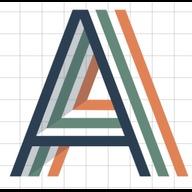Zero Discharge Drilling: Sustainability in Oilfield Operations
Zero Discharge Drilling Technology - Zero discharge technologies aim to eliminate effluent release to the environment by recovering and recycling drilling wastes on-site.
Zero discharge drilling technology represents a comprehensive operational strategy and suite of technologies aimed at eliminating the release of liquid waste and minimizing the solid waste footprint associated with drilling operations. While the term "zero discharge" often technically refers to liquid waste—meaning no process water is discharged into the environment or surface waters—in the context of drilling, it signifies a maximum-recovery, closed-loop approach for all waste streams.
The foundation of ZDD is an integrated Closed-Loop System for drilling fluids. In this system, advanced solids control equipment, including high-speed centrifuges and chemical injection systems, aggressively removes drill solids from the drilling mud as it returns from the wellbore. This recovered mud is then treated and reused, dramatically reducing the consumption of fresh base fluid and the volume of spent mud requiring disposal. This core principle minimizes both cost and environmental impact.
A critical component of achieving ZDD is Produced Water and Flowback Recycling. Drilling and hydraulic fracturing generate significant volumes of water. Instead of disposing of this water via injection wells or off-site treatment, ZDD technology employs modular, scalable water treatment units that purify the water. These units often use sophisticated membrane filtration, chemical flocculation, and microbial treatment to reduce total dissolved solids (TDS) and suspended solids, making the water suitable for use in subsequent drilling or fracturing jobs, effectively closing the water loop.
For solid waste (cuttings), the ZDD philosophy is realized through Cuttings Reinjection (CRI) or On-site Thermal Treatment. CRI is the ideal ZDD solution for solids, as the waste is injected back into the earth from which it originated, eliminating surface disposal. Where CRI is not feasible, on-site thermal desorption or advanced solidification processes are used to drastically reduce the volume and hazardous nature of the waste before final, minimal disposal.
The main drivers for ZDD adoption include increasingly stringent regulations, high costs associated with traditional liquid waste disposal (especially truck transport), and a strong corporate emphasis on ESG performance. While ZDD systems require a higher initial capital investment and operational complexity, they offer significant long-term cost savings through reduced fluid and water purchase, lower transportation and disposal fees, and substantial mitigation of environmental liability.
FAQ on Zero Discharge Drilling Technology
Q1: What does "Zero Discharge" primarily mean in the context of drilling?
A: In drilling, "Zero Discharge" primarily means that no liquid waste (spent drilling mud, flowback, or produced water) is discharged into the environment, such as surface water bodies or unlined pits. Instead, the liquid is treated and recycled back into the drilling or hydraulic fracturing process, or permanently isolated through deep-well injection.
Q2: What are the key technologies used to achieve Zero Discharge for liquid waste?
A: Key liquid waste technologies include highly efficient closed-loop solids control systems for drilling mud and advanced modular water treatment units. These water treatment units often employ chemical coagulation, multi-stage filtration, and membrane technologies (like reverse osmosis) to purify produced water for reuse.
Q3: What is the main economic benefit of implementing Zero Discharge Drilling?
A: The main economic benefit is the substantial reduction in operational costs. This is achieved by minimizing the purchase of fresh drilling fluids and water, and drastically cutting the costly transportation and disposal fees associated with hauling large volumes of liquid and solid waste off-site.
- Art
- Causes
- Crafts
- Dance
- Drinks
- Film
- Fitness
- Food
- Games
- Gardening
- Health
- Home
- Literature
- Music
- Networking
- Other
- Party
- Religion
- Shopping
- Sports
- Theater
- Wellness

